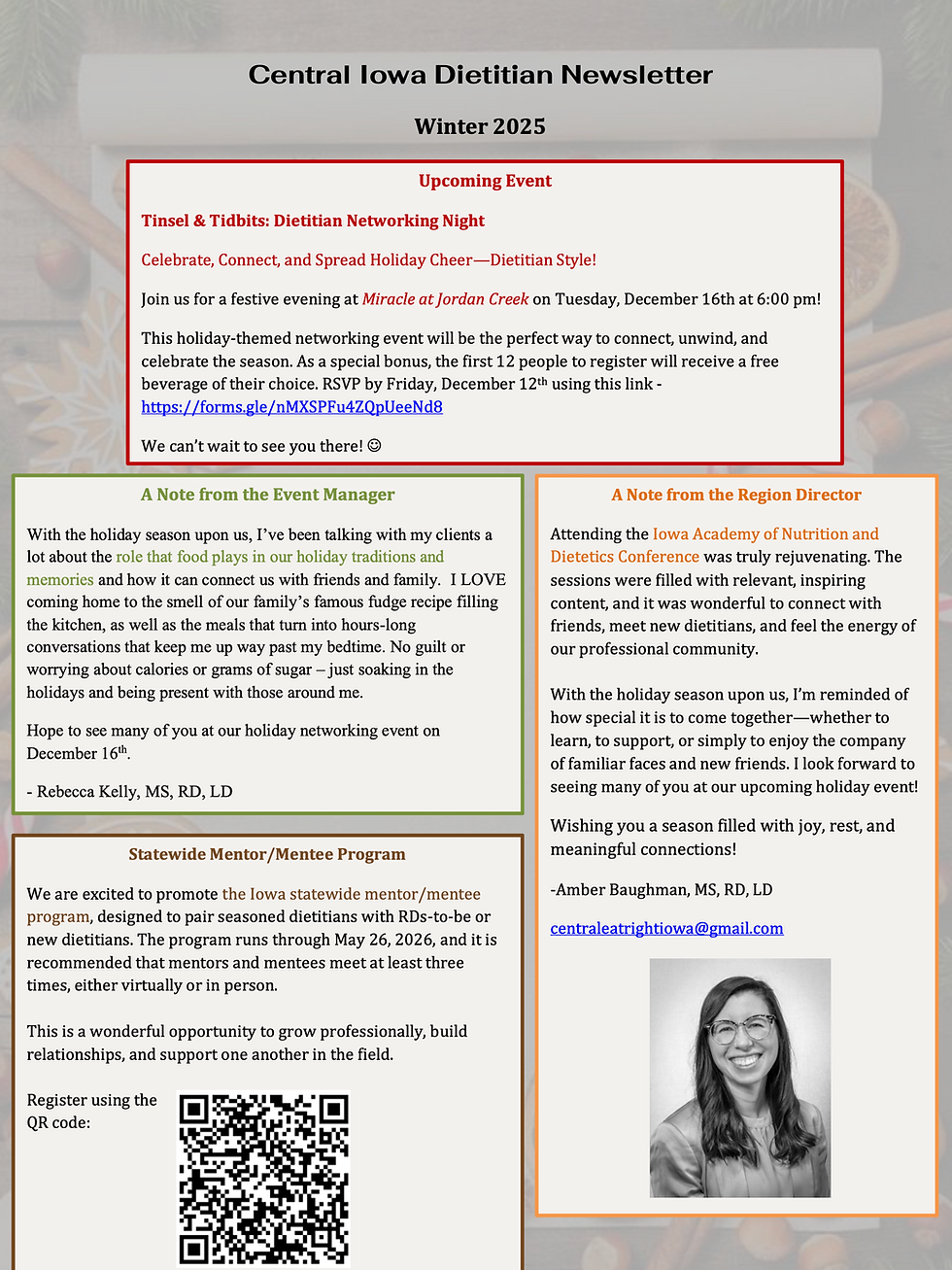How to make homemade baby food
- eatrightiowa
- Nov 14, 2018
- 2 min read
Once babies are four to six months old, they can start eating baby food. Homemade baby food is great and easy to make. It tastes fresh and can save you a lot of money.
When making homemade baby food, first choose the fruits and/or vegetables you are going to make and then gather your supplies: vegetable brush, peeler, knife, saucepan, slotted spoon, blender or food processor, spoon, ice cube trays, plastic wrap, freezer bags, and marker.
Follow These Easy Steps To Make Your Baby Food:
1. Wash the food with a vegetable brush to remove any dirt and bacteria. 2. Remove the skin. 3. Cut into chunks. 4. Cook: Boil in a saucepan, cook in the microwave, or steam with a steamer. Some foods may not need to be cooked, such as bananas or avocados. 5. Using a slotted spoon, transfer the food from the saucepan or bowl to the blender or food processor. Reserve the cooking liquid. 6. Puree the food until it reaches the desired texture. You may have to add cooking liquid to thin it out. If you still have some cooking liquid, you can save it for the broth for soup or other recipes. 7. Drop a tablespoon of baby food into each section of the ice cube tray. Cover with plastic wrap. 8. Freeze overnight. 9. Write down the name of the food and the date on a freezer bag. 10. Remove the baby food from the ice cube trays into the freezer bag. You may have to run it under warm water to loosen. Store in the freezer for about three months. 11. Thoroughly wash all of your supplies with hot soapy water between each batch of baby food. 12. To serve, choose the desired amount of baby food cubes, thaw in the refrigerator or under cool running water, or re-heat (be careful when reheating, so baby does not get burned).
Tips: •First foods for a baby should be iron-fortified cereal like rice cereal followed by single fruits or vegetables such as apples, pears, bananas, peas, sweet potatoes, and squash. •Introduce foods one at a time with about five days between new introductions to monitor for food intolerances or allergies. •Food allergies in babies are similar to what you would see in older children and adults: rash (especially a face or diaper rash), hives, runny nose, watery or puffy eyes, sneezing, difficulty breathing, vomiting, diarrhea, gas, fussiness, or change in temperament. •If the baby food is too thick – dilute it with breastmilk or infant formula. •If the baby food is too thin – thicken it with infant cereal. •As your baby gets older, you can expand to more fruits and vegetables – peaches, carrots, green beans, broccoli, and beets. Then expand to beans and meat and to combinations of foods. As your baby gets even older, you can mash table foods with a fork.
Information courtesy of ISU Extension and Outreach’s Spend Smart. Eat Smart. website.












Comments